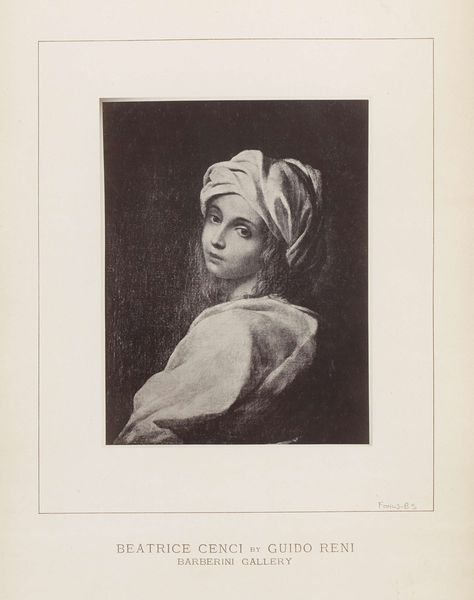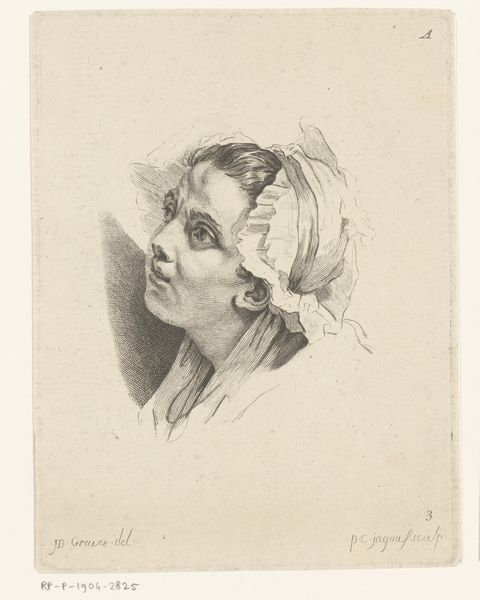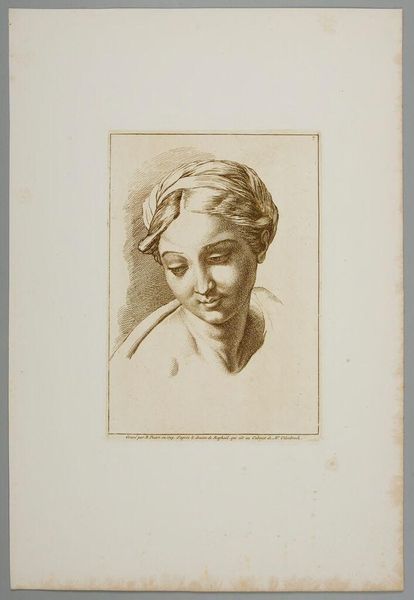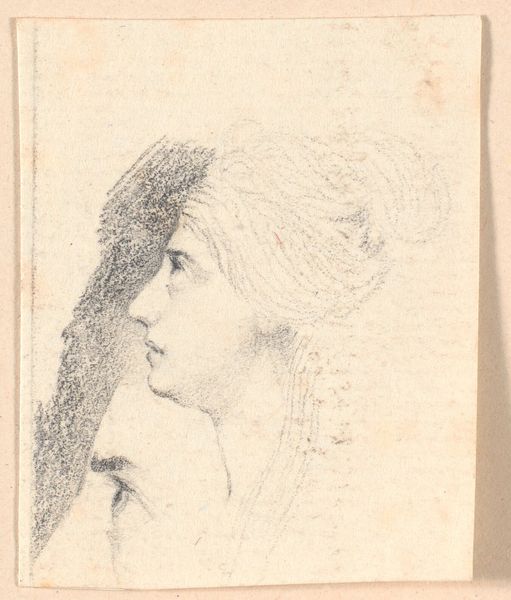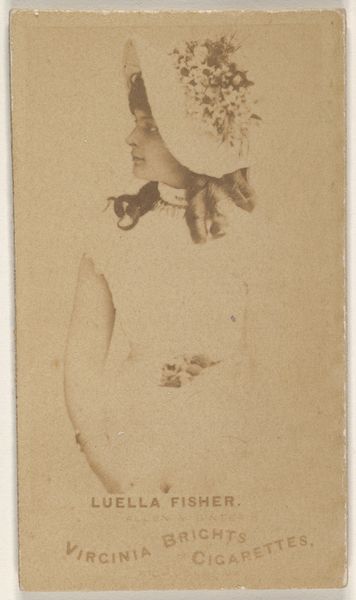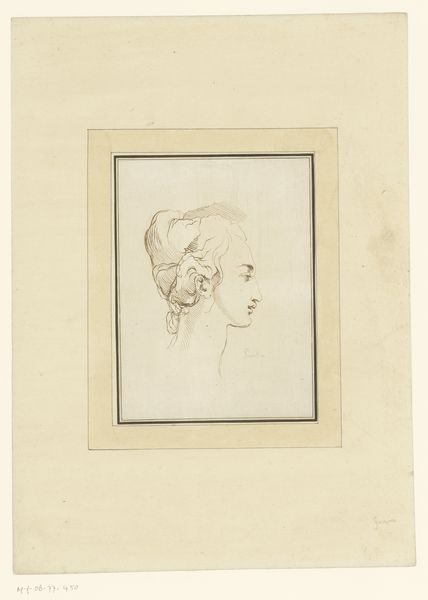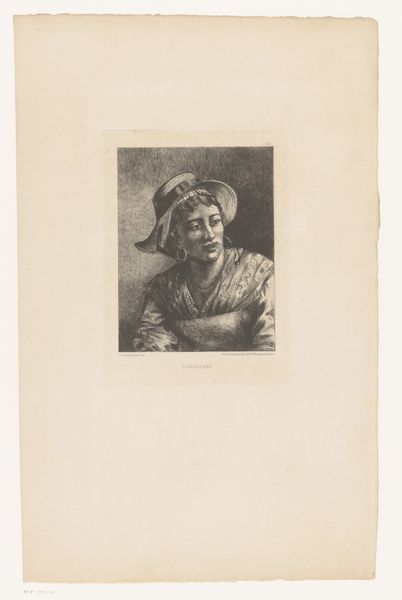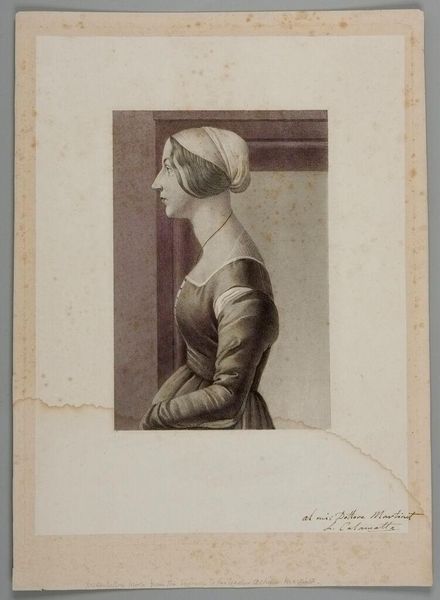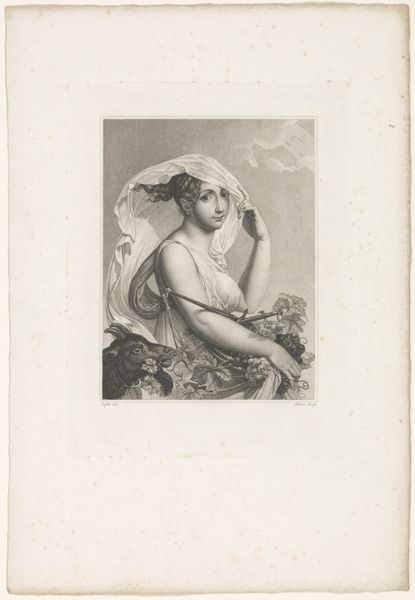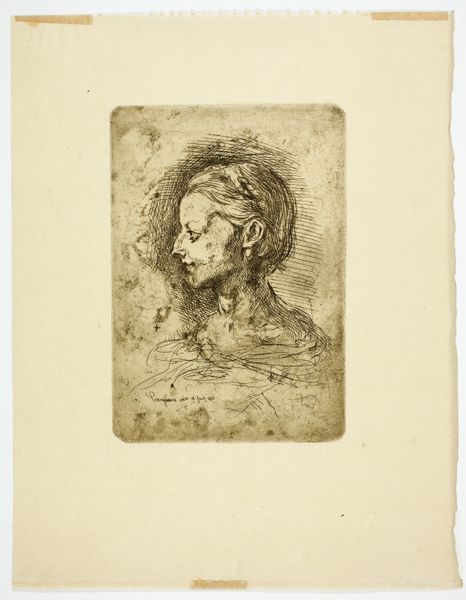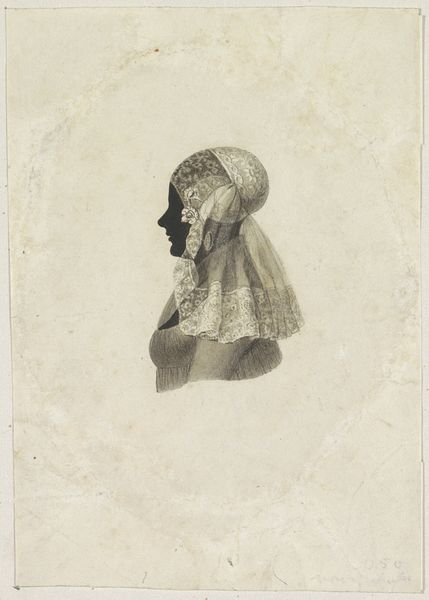
Fotoreproductie van een geschilderd portret van Beatrice Cenci door Guido Reni, in de Galleria Barberini te Rome 1851 - 1900
0:00
0:00
photography
#
portrait
#
aged paper
#
toned paper
#
muted colour palette
#
photo restoration
#
white palette
#
photography
#
framed image
#
realism
Dimensions: height 255 mm, width 195 mm, height 352 mm, width 253 mm
Copyright: Rijks Museum: Open Domain
Editor: So, this photograph from between 1851 and 1900 is called 'Fotoreproductie van een geschilderd portret van Beatrice Cenci door Guido Reni, in de Galleria Barberini te Rome.' It's an anonymous piece housed at the Rijksmuseum, showing a reproduction of Guido Reni’s famous painting. There’s something haunting in her expression; I'm wondering what lies beneath. What do you see in this image, and what can it tell us about the culture from which it emerged? Curator: Absolutely. While ostensibly a photographic reproduction of Reni's portrait of Beatrice Cenci, we can see this image as a document of its time. The act of reproduction itself highlights the 19th-century’s fascination with and appropriation of the past, specifically, romanticizing female victimhood. Look at how the photographic medium itself lends a certain "authenticity" while simultaneously distancing us from the original. Does it make us think about the power dynamics involved in depicting and consuming images of women who suffered historically? Editor: That's a really interesting point about authenticating suffering. I hadn’t considered the photograph's own context that deeply. Do you think the photographer’s choice of subject suggests a commentary on justice or the lack thereof for women? Curator: It's compelling to consider. The Cenci story was hugely popular; a narrative ripe for artistic interpretation. Consider this photograph alongside the socio-political realities of the time; increased literacy and print culture allowed for wider dissemination of images and narratives, influencing public consciousness. The photographer could be drawing a parallel, implicitly or explicitly, between Cenci’s plight and contemporary struggles for female emancipation, especially as relates to rights and social status within the social stratification. Editor: That helps me to see this photograph not just as a copy, but as an active statement, part of a wider conversation. I'll definitely look into how this photo intersects with early feminist ideas. Curator: Exactly! By contextualizing artwork we not only get an idea of its historical period, we also gain insight into our present moment, as we interpret through the lens of gender and power.
Comments
No comments
Be the first to comment and join the conversation on the ultimate creative platform.
